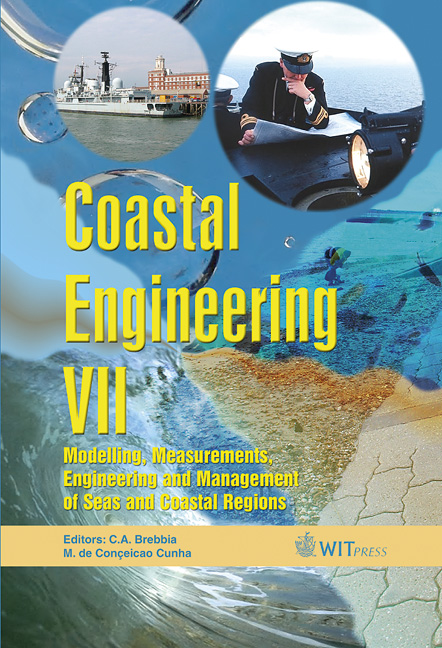Further Improvement Of Drift Forecast At Sea Based On Operational Oceanography Systems
Price
Free (open access)
Transaction
Volume
78
Pages
10
Published
2005
Size
711 kb
Paper DOI
10.2495/CE050021
Copyright
WIT Press
Author(s)
P. Daniel, P. Josse & Ph. Dandin
Abstract
The use of operational products delivered from operational oceanography systems to oil spill drift applications is investigated. The evaluation is conducted with the French operational oil spill drift forecast system MOTHY and two operational oceanography systems, MERCATOR (MERCATOR-OCEAN, France) and MFS (INGV, Italy). The present work focuses on evaluating the effects of introducing large-scale currents in the MOTHY system. This effect is investigated in the Bay of Biscay and in the Western part of the Mediterranean Sea. Preliminary results are most encouraging. Keywords: oil spill, drift, ocean, operational oceanography, modeling. 1 Introduction Several European operational oceanography and data assimilation systems have been implemented for the last few years. All these systems use different operational capacities, data streams and expertise. Remote sensing and in-situ data are acquired and assimilated in state-of-the-art ocean general circulation models to analyse and forecast the 3D state of the North Atlantic and adjacent European Shelf Seas, and the Mediterranean Sea. They aim to support a wide range of scientific and operational services and applications including oil spill monitoring, marine safety as well as offshore oil industry. French operational capacity in oil spill drift forecast is based on Météo-France and Cedre expertises. Drift forecasts rely on a pollutant drift model, named MOTHY. The system includes local area hydrodynamic coastal ocean modelling and real time atmospheric forcing from a global meteorological model. Pollutants can be oil or floating objects. MOTHY has been extensively
Keywords
oil spill, drift, ocean, operational oceanography, modeling.





